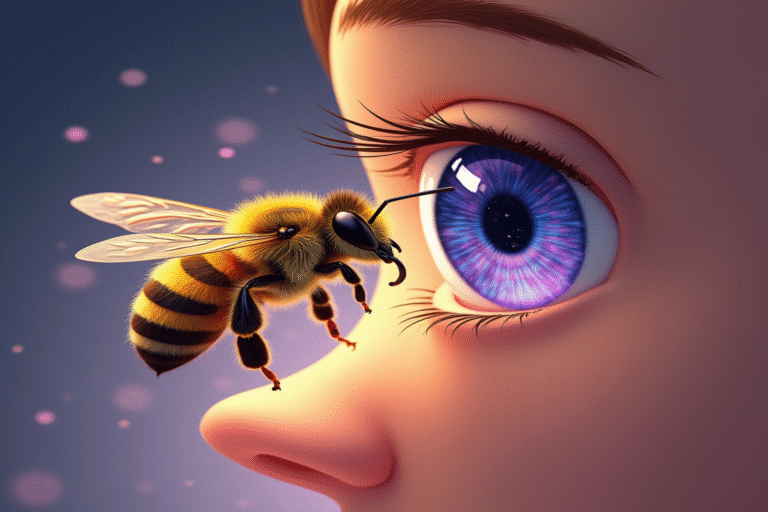Imagine discovering that an insect with a brain smaller than a pinhead can recognize your face the same way you recognize a friend in a crowd. This seemingly impossible ability has been confirmed by researchers, leaving scientists amazed at the cognitive capabilities of these tiny creatures.
Remarkable recognition with minimal hardware
Honeybees possess less than one million neurons, compared to our 86 billion, yet they can reliably distinguish between different human faces. Research conducted at Australian and French universities has demonstrated that bees can be trained to identify specific human faces, remember them for days, and even recognize them from different angles—much like humans do.
What is particularly fascinating is that bees accomplish this without having a dedicated facial recognition region like the fusiform face area in human brains. Instead, they use a method called “configural processing,” analyzing how facial features relate to each other in space.
The surprising similarities in processing
Despite having evolved separately for over 400 million years, bees process faces in ways strikingly similar to humans:
- They focus heavily on the upper half of faces (eyes and hairline).
- They analyze the spatial relationships between features rather than individual features alone.
- They can recognize faces even when lighting or orientation changes.
This type of pattern recognition uses the same neural mechanisms bees use to identify and remember flowers. When motivated by sugar rewards, they simply apply these powerful learning methods to human faces.
Visual systems that defy expectations
Bees see the world through compound eyes containing thousands of tiny lenses, creating a mosaic-like visual field. They also perceive ultraviolet patterns invisible to humans. Through these fundamentally different visual systems, bees still manage to extract the essential patterns that define individual human faces.
Dr. Adrian Dyer, a leading researcher in this field, explains: “The ability to recognize faces is not unique to large-brained mammals. These miniature brains have evolved to solve complex problems in different ways, showing us that intelligence takes many forms in nature.”
Beyond scientific curiosity
This research has profound implications. It challenges our understanding of intelligence and has inspired new approaches to artificial intelligence. Engineers are now developing more efficient facial recognition algorithms based on how bees process visual information with minimal computational resources.
Perhaps most intriguing is what this reveals about consciousness itself. If an insect with fewer neurons than pixels in a low-resolution image can recognize individual humans, what does that tell us about the minimum requirements for awareness and cognition?
The next time a bee hovers near you, consider that it might actually recognize you from previous encounters—a humbling reminder that intelligence in nature takes many remarkable forms, often hiding in the smallest of packages.





